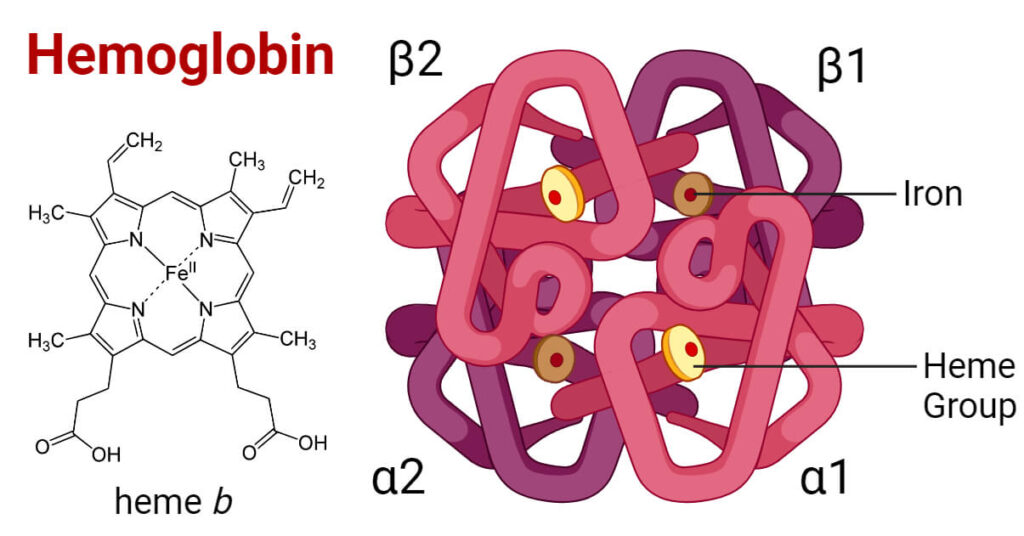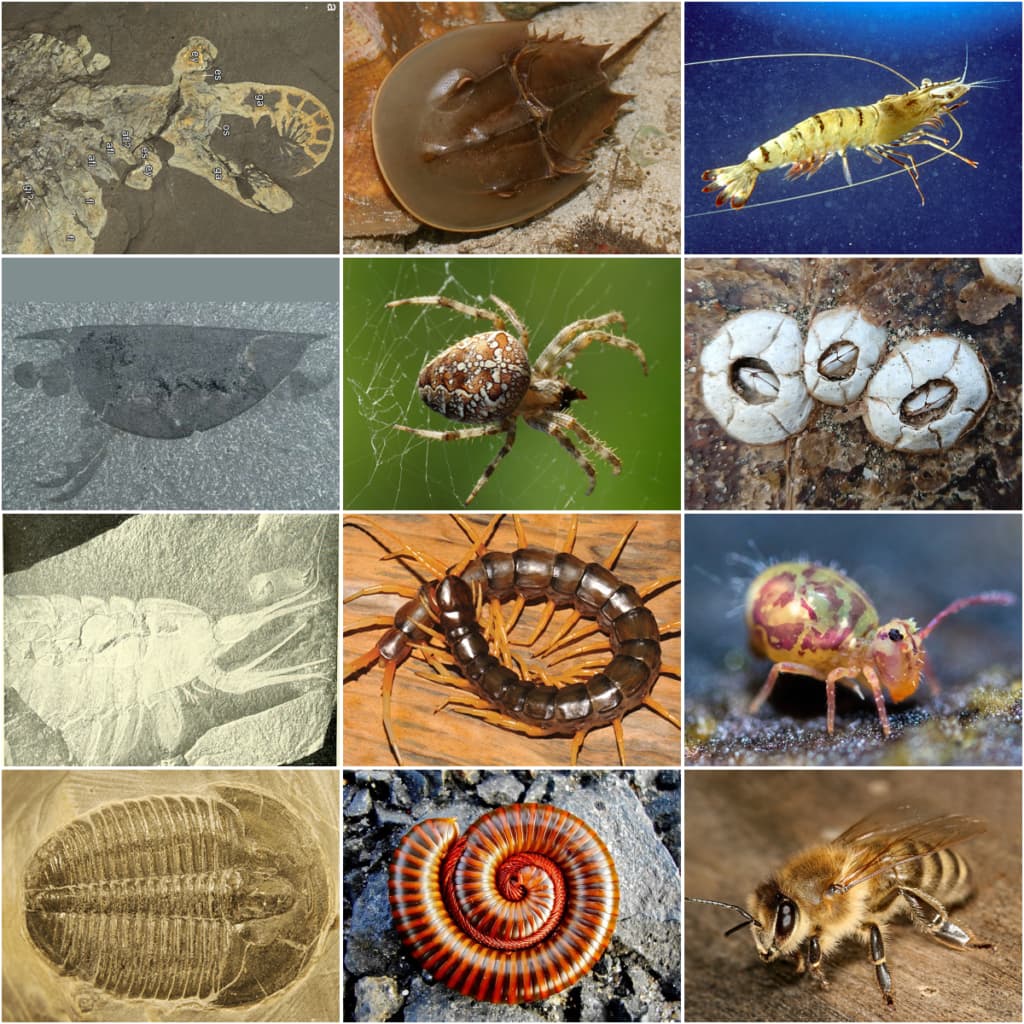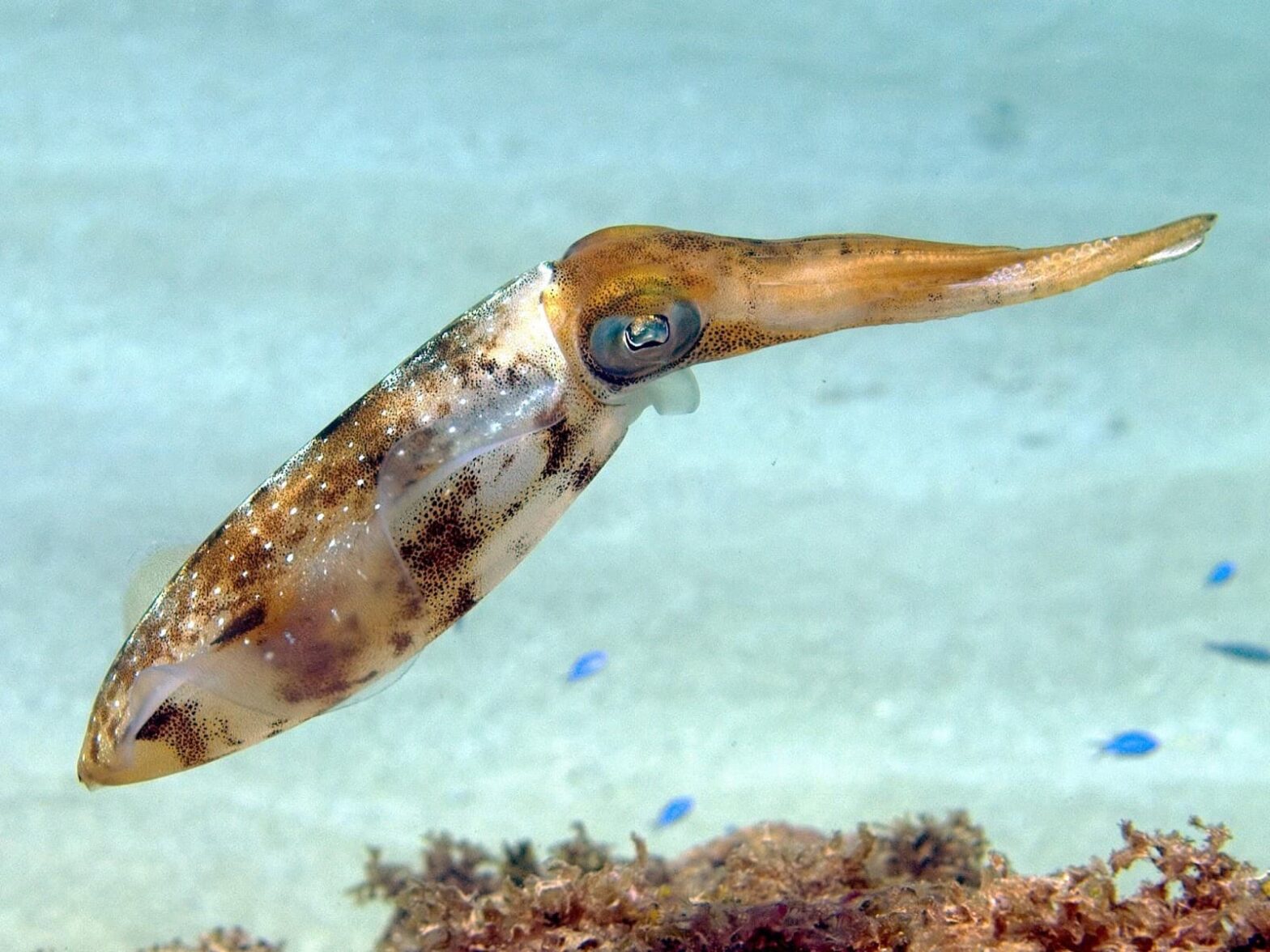In the vast tapestry of Earth’s biodiversity, there exists a stunning array of adaptations that continually astound and captivate. Among these adaptations lies a phenomenon both intriguing and enigmatic: blue blood. While the concept may evoke images of extraterrestrial beings, blue-blooded animals are very much a part of our terrestrial realm, each harboring secrets and evolutionary marvels.
Let’s embark on a journey to unravel the mysteries behind the azure-hued lifeblood coursing through the veins of certain creatures, from the depths of the ocean to the forefront of medical science.
Chemicals Determine The Color of An Animal’s Blood

The crimson hue of blood, familiar to us and prevalent across much of the animal kingdom, finds its origin in hemoglobin, a complex protein with iron at its core. However, in certain corners of the natural world, a different pigment reigns supreme: hemocyanin, adorned with a central copper atom. It is this very difference in molecular makeup that bequeaths the striking cerulean tint to the blood of select species, setting them apart in the spectrum of life’s palette.
The chemicals present in an animal’s blood play a crucial role in determining its color. Here’s a deeper dive into this fascinating topic:
Hemoglobin & Red Blood:
- Most mammals, including humans, have red blood due to the presence of a protein called hemoglobin in their red blood cells;
- Hemoglobin contains iron, and it’s the iron that gives blood its characteristic red color when it binds to oxygen;
- As blood circulates, it absorbs oxygen in the lungs, turning bright red due to the oxygenated hemoglobin. Later, it releases oxygen to tissues, becoming slightly darker red.
The Significance of Color:
- The color of an animal’s blood affects its ability to absorb and transport oxygen efficiently;
- Hemoglobin is particularly good at binding oxygen, which is why it’s dominant in animals with high metabolic demands;
- Hemocyanin is less efficient but works better in cold environments where oxygen dissolves less readily in water.
Some animals can change their blood color depending on their environment or internal state. For example, some chameleons change from light to dark to adjust their body temperature.
Studying the different types of blood can offer insights into an animal’s evolutionary history and adaptations to its environment.
Hemocyanin Instead of Hemoglobin: The “Cooler” Choice

In the chilly embrace of colder climates or the oxygen-deprived depths of the ocean’s abyss, hemocyanin emerges as the champion of oxygen transport. Unlike its iron-bound counterpart, hemoglobin, hemocyanin’s affinity for oxygen flourishes under such conditions, ensuring the survival of creatures dwelling in these harsh environs. Yet, as temperatures rise and oxygen levels soar, the pendulum swings in favor of hemoglobin, underscoring nature’s exquisite balance and adaptability.
Hemocyanin is indeed a fascinating alternative to hemoglobin, particularly in certain species of invertebrates such as mollusks and arthropods. While hemoglobin is the oxygen-carrying molecule found in the blood of vertebrates, hemocyanin serves a similar function in the blood of many invertebrates.
Here are some reasons why hemocyanin can be considered the “cooler” choice:
- Colorful Blood: Unlike the red color of blood in vertebrates due to the iron-containing hemoglobin, the blood of animals with hemocyanin often appears blue when oxygenated. This is because hemocyanin contains copper atoms, which impart a blue color when oxygenated;
- Efficiency in Low Oxygen Environments: Hemocyanin is particularly efficient at binding oxygen in environments with low oxygen concentrations, such as deep-sea or cold-water habitats where many organisms that possess it reside. This is due to its high oxygen affinity, which helps these organisms survive in their natural environments;
- Adaptability to Temperature Changes: Hemocyanin can adapt to changes in temperature better than hemoglobin. This makes it ideal for organisms living in environments with variable temperatures, such as cold-blooded invertebrates;
- Immune Function: Some research suggests that hemocyanin may also play a role in the immune response of certain invertebrates, providing them with additional benefits beyond oxygen transport;
- Evolutionary Perspective: Hemocyanin represents an alternative evolutionary solution to the problem of oxygen transport. Studying hemocyanin can provide insights into the diversity of life and the various ways organisms have adapted to their environments over millions of years of evolution.
Overall, while hemoglobin is well-known and widely studied due to its presence in vertebrates, hemocyanin offers an intriguing alternative with its own unique properties and adaptations. Its role in the physiology and ecology of invertebrates continues to fascinate researchers and enthusiasts alike.
Does Having Blue Blood Benefit Animals?
Far from mere aesthetic peculiarity, the possession of blue blood confers upon its bearers a suite of evolutionary advantages. From enhanced camouflage in the azure expanse of the ocean to bolstered immunity against microbial foes, these adaptations serve as testament to the intricate dance between organism and environment. Blue-blooded creatures stand as exemplars of nature’s ingenuity, thriving in niches where others falter, their cerulean veins pulsing with resilience and resilience.
Having blue blood, as seen in animals with hemocyanin, does confer certain benefits, particularly in the context of their environments and physiology:
- Efficient Oxygen Transport: Hemocyanin is highly efficient at carrying oxygen, especially in environments with low oxygen concentrations. The blue coloration of the blood comes from the copper atoms in hemocyanin binding with oxygen, giving it a distinctive appearance. This efficient oxygen transport is crucial for the survival of organisms living in habitats with low oxygen levels, such as deep-sea environments;
- Adaptation to Cold Environments: Many organisms with hemocyanin inhabit cold-water environments. Hemocyanin’s ability to adapt to temperature changes makes it advantageous for organisms living in these regions. The efficiency of hemocyanin in cold temperatures allows these animals to maintain adequate oxygen supply even in frigid waters;
- Resistance to Acidosis: Hemocyanin also exhibits resistance to acidosis, a condition where the blood becomes too acidic. This is particularly beneficial for organisms that may experience fluctuations in pH levels due to environmental factors or metabolic processes;
- Evolutionary Adaptation: Over evolutionary time, the presence of hemocyanin has allowed certain invertebrates to thrive in diverse habitats and niches. It represents an alternative solution to oxygen transport compared to hemoglobin, demonstrating the adaptability and diversity of life.
While having blue blood may not be inherently advantageous in all contexts, for the organisms that possess hemocyanin, it is a crucial adaptation that supports their survival in specific environments and contributes to their overall physiological function.
Which Ocean Animals Have Blue Blood?
Several marine invertebrates possess blue blood due to the presence of hemocyanin. Some notable examples include:
Horseshoe Crabs

Horseshoe crabs are perhaps the most well-known example of animals with blue blood. Their blood contains hemocyanin, which gives it a distinctive blue color. Horseshoe crab blood is also valuable in the biomedical industry due to its unique properties, particularly its ability to detect bacterial endotoxins, leading to its use in tests for sterility of medical equipment and pharmaceuticals.
Octopuses and Squids

Cephalopods such as octopuses, squids, and cuttlefish have blue blood as well. Hemocyanin is found in their circulatory systems and aids in oxygen transport. This is especially important for deep-sea cephalopods, which inhabit environments with low oxygen levels.
Mollusks
Various mollusks, including certain snails, clams, and other shellfish, possess hemocyanin and have blue blood. This includes species like certain marine snails (e.g., abalones) and bivalve mollusks (e.g., mussels).
Arthropods

Some arthropods, including certain crustaceans like lobsters, shrimp, and crabs, have hemocyanin-containing blue blood. This is particularly notable in deep-sea crustaceans, which often face low-oxygen conditions in their habitats.
These animals have evolved to thrive in diverse marine environments, and their blue blood, facilitated by hemocyanin, plays a crucial role in their adaptation to these habitats. Additionally, the unique properties of hemocyanin, such as its efficiency in oxygen transport and its resistance to acidosis, contribute to the survival of these organisms in their respective niches.
Blue Blood Animals and Their Relation to Humans
Blue blood, found in animals with hemocyanin, is not directly related to humans in terms of physiological function or evolutionary lineage. Humans, like other vertebrates, have red blood due to the presence of hemoglobin, which contains iron and gives blood its characteristic red color when oxygenated.
However, there are some indirect connections and potential implications for humans regarding blue blood animals:
- Biomedical Research: Studying the unique properties of hemocyanin and its function in blue blood animals can provide valuable insights for biomedical research. For example, understanding how hemocyanin efficiently transports oxygen in low-oxygen environments could inspire the development of medical treatments for conditions related to oxygen transport or storage in humans;
- Evolutionary Perspective: Comparing the evolutionary pathways of hemoglobin and hemocyanin can shed light on the diversity of oxygen transport mechanisms across different species. This comparative approach can deepen our understanding of evolutionary biology and provide insights into the adaptive strategies that have arisen in response to various environmental challenges;
- Conservation and Environmental Impact: Some blue blood animals, such as certain species of mollusks and crustaceans, play important ecological roles and contribute to marine ecosystems. Understanding their physiology, including their oxygen transport mechanisms, can inform conservation efforts aimed at protecting these species and their habitats, which indirectly benefits humans by maintaining healthy ecosystems;
- Inspiration for Technology: Nature often serves as a source of inspiration for human technology and innovation. Studying the adaptations of blue blood animals could lead to the development of biomimetic materials or technologies that mimic their efficient oxygen transport systems for applications in fields such as biotechnology or materials science.
While humans and blue blood animals are not directly related in terms of blood physiology, exploring the similarities and differences between their oxygen transport mechanisms can yield valuable scientific knowledge and potential practical applications with relevance to human health, technology, and environmental conservation.
Conclusion
In the tapestry of life, diversity reigns supreme, weaving a narrative of adaptation and resilience across eons untold. Amidst this kaleidoscope of existence, blue blood serves as a poignant reminder of nature’s boundless creativity and resourcefulness. From the ocean’s depths to the corridors of science, the legacy of these azure-hued marvels endures, a testament to the wonders that lie waiting to be discovered in the vibrant mosaic of our world.



